When creating the StrongFirst Lifting (SFL) Manual as well as the accompanying SFL Barbell Certification, we developed standards for the five tests administered at the SFL. These standards are based on the International Powerlifting Federation (IPF) and the USA Powerlifting (USAPL)’s “Rules of Performance.” Some of the SFL standards are identical to theirs and some loosely resemble them. We chose the IPF/USAPL standards because of their focus on safety and technique. I was a member, athlete, coach, executive committee member, and vice president throughout my nearly twenty years in USAPL. I respect their high standards and decisions. The IPF recently made changes regarding the performance of the bench press in competition. This change will also affect the SFL testing standards for the bench press. In this article, I will explain the new standards as well as provide drills for thoracic mobility that will prepare you for these modifications.
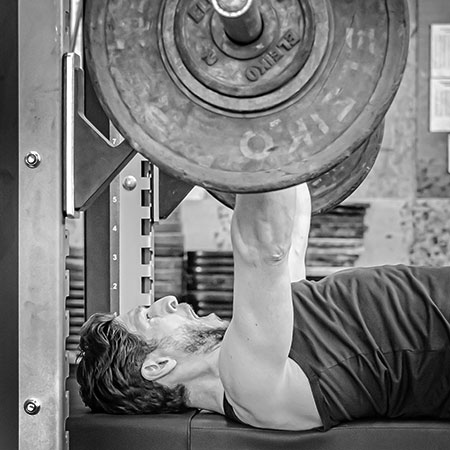
Keep Your Feet off the Bench
Two additions have been made to the IPF “Rules of Performance” for the bench press. The first one is during the setup. The competitor is no longer allowed to place their feet on the bench during the setup to perform the lift. Lifters who do this are trying to achieve a greater arch prior to unracking the bar and driving their scapula/shoulders into the bench pad.
Over my eight years as the national head coach for the USAPL world bench press team, I have seen many lifters, usually in the lighter weight classes, do it this way. Their arch was huge and we used to say, “You could drive a truck under it.” The lifters found that having a larger arch decreased the distance the bar traveled down to their chest and back up, thereby decreasing the total amount of work they had to perform during the lift. This in turn allowed them to attempt heavier weights. It was almost a show of human contortion ability. It also hurt my eyes to see these lifters set up this way as I can only imagine what they were doing to their lumbosacral spine by lifting heavy from this position. Ouch!
Most of the heavier lifters, such as myself, were not able to set up this way, therefore our arch wasn’t as large. As mentioned in the SFL Manual, this is an extreme body position, and we don’t recommend it. Most of the time the competitors with large arches are near the top of their game. One of the things that attracted me to work with Pavel initially, and eventually to write the SFL Manual with him, was our combined technical knowledge of strength training. Learning proper technique before building strength means proper strength gains not only for the short-term but also the long-term. At the SFL, we teach that the arch should come from the thoracic spine, not the lumbar spine. Mild lumbar hyperextension will occur, but most should come from the thoracic region.
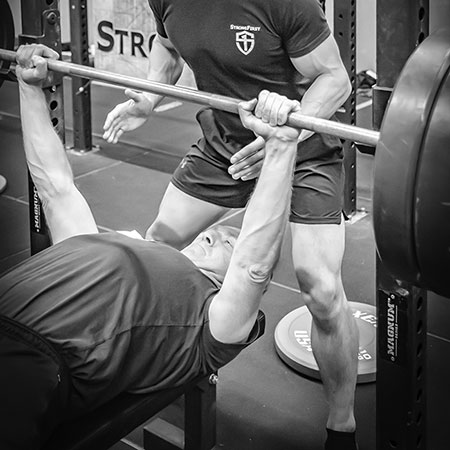
Early on in the SFL Certification, we discuss the need for the ability to extend the thoracic spine, not only for general health, but also for the front squat, the military press, and other lifts taught during the weekend. Drills are also given throughout the weekend to assist students with increasing the extension of their thoracic spine (we will cover these later). In today’s society, we tend to lose the ability to extend the upper and middle back, mostly because of the increased usage of computers and cell phones.
Based on the change in the IPF’s “Rules of Performance” and the reasons mentioned above concerning lumbar extension, students at the SFL will no longer be allowed to place their feet on the bench during the setup prior to bench pressing. The new standard will require setting the feet on the floor first, then building on top of that to finish the setup much like we have taught since the inception of the SFL in 2013.
Wait for the Signal
One final change to the SFL standards for the bench press test is that in every attempt, once the student has stopped the bar on their chest, the head referee will verbally give the PRESS signal. At this time the student will press the bar to lockout and then wait for the RACK signal. This has been the standard in the IPF for a long time; however, in the SFL it was up to the student whether or not to receive the PRESS signal. With the advent of the new rule changes for not only the IPF but also the SFL, it was decided to make it a requirement that each student will receive the PRESS signal after the bar has come to a complete pause on their chest.
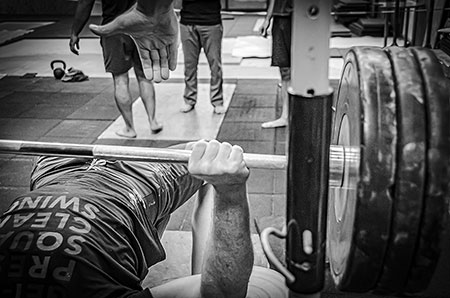
Drills for Thoracic Mobility
To get free access to Module 3: Foundations for the Barbell Course, CLICK HERE
The purpose of the SFL bench press test is to demonstrate your strength and mobility, but not at the expense of your body now, or in the future. To enhance the ability to extend the thoracic spine in both a general aspect (i.e., improving your posture) and a specific aspect (i.e., the bench press), I have provided the following drills. These are drills that an individual can use to improve their bench press and ensure they meet the revised SFL standards.
1. Foam Roller—Thoracic Spine Extension
Lie down on a foam roller with the roller perpendicular to the spine, knees bent, and feet on the floor. Place the roller at the upper end of the thoracic spine. Hold the head with the elbows forward. This allows the cervical spine to be stabilized. Make sure the extension only happens at the thoracic spine instead of through the neck. Slowly roll down the roller, stopping at restricted areas, breathing deeply at this point several times until it eases up. Move on until you have covered the entire thoracic spine (stop at the bottom of the ribs). My recommendation is to do this two times, one right after the other. When finished, come out of the drill slowly by rolling to your side rather than sitting up.
2. Passive Stretch with a Yoga Block
Set the block on what would be the book spine if it were a book. Lie on it lengthwise, the top end at the mid-thoracic spine. Place a folded towel under your head to limit the cervical extension and enable you to stay in the stretch longer. Push your shoulders towards your feet and relax your arms on the floor with palms up. Stay in the stretch for minutes, “oozing” over the block, developing thoracic spine extension and the lateral arch. Come out of the stretch by slowly rolling to your side rather than sitting up. Vary the placement of the top of the block under different sections of your thoracic spine. An alternative is to place the yoga block perpendicular to the thoracic spine. You can place it in 2-3 different positions.
3. Kettlebell Pullover
This particular drill will help your shoulder mobility which will indirectly improve the ability of your thoracic spine to extend. Lying on your back with your knees bent and feet flat on the floor, safely hold a light kettlebell above your chest with arms straight. Keeping your elbows locked, slowly raise the kettlebell above your head until it is touching the floor. Keep your lower back flat and pressed to the floor. Breathe relaxed. Bring the kettlebell back above your chest. Repeat 3-5 times.
4. StrongFirst Arm Bar
This drill is taught at the SFG Level I Certification. It develops thoracic spine rotation, which indirectly improves its extension and the lateral arch. Lie on your left side with the kettlebell close to you. Grab the handle with your left hand and place your right hand with a thumbless grip over the top. While keeping the kettlebell close to you, roll to your back with the two-handed grip. The kettlebell will be down by your ribs with your left elbow on the ground. Let go with your right hand and floor press the kettlebell up or press the kettlebell up with both hands. Keep your thumb pointed toward your head. Bend your left knee to approximately 90 degrees and keep your right leg straight. Place your right hand on the ground above your head.
With your left leg, roll your body to the right, using your right arm and leg as the axis. Place your left knee on the ground with your hip flexed to 90 degrees while resting your head on your right arm. Your left arm should be perpendicular to the floor and your thumb is pointing toward your head. “Anti-shrug” both shoulders and squeeze your shoulder blades together, visualizing “lengthening your collarbones” and packing your shoulders during this movement.
Straighten out your left leg so that it ends up being approximately shoulder width apart or wider from your right leg. Keep your toes pointed. Breathe in and as you exhale, squeeze your left gluteus maximus to bring the front of your left hip toward the ground. Do this for 3 to 5 reps. When done, flex your left hip back to 90 degrees. Using the fingers of your right hand, slowly inch your right arm into further flexion. Keep your head on your right bicep. If you reach full flexion of your right arm, do not go any further. Repeat two more times. Once finished, reverse the movements and positions during your initial setup to set the kettlebell on the ground. When switching sides, you can use both hands to drag the kettlebell on the floor around your head in an arc to the other side or you can move your body to the other side of the kettlebell. An advanced version, the Bent Arm Bar, is taught at the SFG Level II Certification. Both drills are excellent for improving the thoracic rotation.
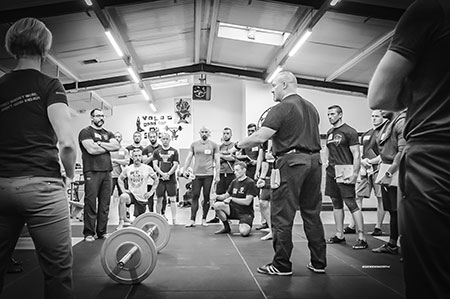
Conclusion
At StrongFirst we believe technique and safety cannot be separated from strength. We teach both at the SFL, along with seven different barbell lifts and programming. Although the SFL is not a powerlifting course, we respect the high standards of the IPF and the emphasis they put on safety and technique. They have changed their regulations, and we are changing ours. To review, here are the new SFL standards:
- Students at the SFL will no longer be allowed to place their feet on the bench during the setup prior to bench pressing.
- Students at the SFL must meet the depth requirement, ensuring the underside of the elbow joint is level with or below the top of the shoulder joint.
- Students at the SFL must wait for the PRESS signal after the bar has come to a complete pause on their chest.
If you are attending an upcoming SFL Certification, remember to keep your feet off the bench, mind your elbows, and wait for the PRESS signal. These new SFL standards will become effective on January 1, 2023. Train strong, train safe, and be healthy!


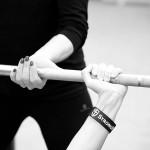

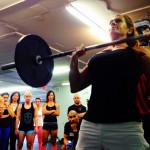

Hi Michael, thanks for sharing your wisdom and experience, it is so useful. Linking strength and safety is paramount . As a visual learner, I would find it really useful to see you practice the drills. Do you have a video link that you could share?